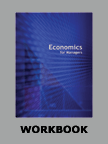Governance Problems at Royal Dutch/Shell
|
|
ICMR HOME | Case Studies Collection
Case Details:
Case Code : BSTR155
Case Length : 17
Pages Period : 2000 - 2005
Organization : Royal Dutch | Shell
Pub Date : 2005
Teaching Note :Not Available
Countries : UK, Netherlands
Themes: Corporate Governance
Industry : Petroleum and Petrochemicals
To download Governance Problems at Royal Dutch/Shell case study (Case Code: BSTR155) click on the button below, and select the case from the list of available cases:

OR

Buy With PayPal
|
Price:
For delivery in electronic format: Rs. 500;
For delivery through courier (within India): Rs. 500 + Shipping & Handling Charges extra
» Business Strategy Case Studies
» Case Studies Collection
» Business Strategy Short Case Studies
» View Detailed Pricing Info
» How To Order This Case
» Business Case Studies
» Case Studies by Area
» Case Studies by Industry
» Case Studies by Company
Please note:
This case study was compiled from published sources, and is intended to be used as a basis for class discussion. It is not intended to illustrate either effective or ineffective handling of a management situation. Nor is it a primary information source.
Chat with us

Please leave your feedback

|
|




<< Previous
Introduction Contd...
|
The internal review report released by Shell on April 19, 2004, stated that the
top managers at Shell knew about the inflated reserves for years and had been
arguing about whether and how to lie about it to the company's shareholders. The
controversy led to the exit of top managerial personnel and a fall in the
company's credit ratings8. Apart from shattering investor confidence, the
reputation of the company was also badly hit. Analysts were of the opinion that
apart from lack of standard policies with regard to reporting and categorization
of oil reserves; and absence of third party audits of oil reserves to ensure
transparency, one major reason for the crisis was Shell's organizational
structure.
|

|
They found that the bi-national Dutch/English ownership structure of Shell with
two boards and a Committee of Managing Directors had resulted in lower
accountability. Absence of clearly defined roles and responsibilities of the
top management made misrepresentation easier. A few analysts believed that
Shell would benefit greatly by changing its organizational structure so as
to have a single board.
|
|
Background Note
The Royal Dutch/Shell Group was formed in 1907 through the merger of the
assets and operations of the Netherlands-based Royal Dutch Petroleum
Company (RD) and the British-based Shell Transport and Trading Company (STT).
The history of Shell dates back to 1833 when Marcus Samuel opened a shop
in London, selling sea-shells. This business quickly developed into a
thriving trading company which was later managed by his son, Marcus
Samuel Jr. His business visits to the Far East made him realize the
potential for supplying kerosene to be used for lighting and cooking,
from the developing Russian oilfields, to the large markets in China and
the Far East... |
Excerpts>>
|










